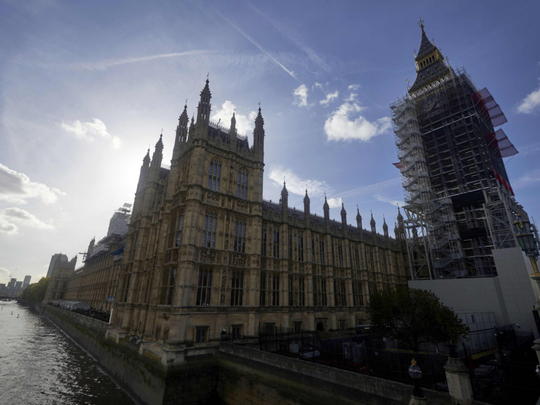
British members of parliament have at last steeled themselves to move out of their great gothic palace on the Thames. Some time in the next decade, they will be decanted to allow the builders to move in for a huge renovation programme. The debate has been going on for years; the risk of doing nothing has to be truly terrifying to convince any large group of people that action is a better choice. But at last the prospect of being felled by a falling crocket from a gothic pinnacle, or drowning in a flood of raw sewage after the Victorian drains have exploded, persuaded just enough of them in a vote last Wednesday to agree that the work needed to be done.
All this hemming and hawing was justified. The cost of what is known as ‘restoration and renewal’, perhaps unhappily abbreviated to ‘R and R’, is already projected to be rather more than the cost of commissioning Carillion to build, equip and staff a dozen hospitals. And voters, never dewy-eyed about their legislators, have rarely held them in quite such low esteem.
But there is another reason to be fearful. Maybe, the doomsters warn, they will never go back. Seduced by the ease and comfort of a modern building and impressed by the work they can get done if they do not have to trek for 10 minutes down corridors and up stairs to vote in the division lobbies, they will never want to return. A thousand years of history trashed for air-conditioning and flushing lavatories.
There will surely be a certain appeal about offices with decent ventilation and working plumbing. The Commons chamber is a terrifying, shouty place that privileges loud-voiced men and is intended to foster division. The cloakrooms are still hung with pink ribbons for swords, the shooting gallery has only recently been replaced and it’s positively hostile to visitors. The antique language and cumbersome procedure involved in doing business, which in places still uses the kind of French spoken by the embroiderers of the Bayeux tapestry, might have been designed to obscure rather than illuminate the exercise of power.
When the Palace of Westminster was rebuilt in the 19th century, it was a considered response to a particular narrative about the nation’s history (which mostly meant England’s). It is part fantasy, part fortress, a castle of power founded on legends of chivalrous knights and a tapestry of events ornamented with kings, queens and heroes. To many of its critics, it embodies the dysfunction that is enfeebling the state itself. Built to sustain a certain kind of governance, now it dulls its purpose by slowing the pace of change to a slug-like crawl.
The Westminster version of history is less than 200 years old, but its weight is enough to dull the edge of even slightly radical intent. In the week that baby leave has been approved , finally dragging practice for MPs into the same century as work for most other people, defending Slow Parliament is not an easy call. The point is that it dulls radical intent wherever it comes from. It was just as hard to get a majority in parliament for going into Europe in 1973 as British Prime Minister Theresa May may find it for getting out in 2019.
Efficiency and dispatch are the weapons of the autocrat and the tyrant, as the academic David Runciman points out in his book assessing democracy’s failings. Yet, while it may seem a weakness that the Westminster process creaks and grinds in lethargic response to political pressure however urgent, it is really an essential strength.
At this stage in the argument, it is customary to mention the Dangerous Dogs Act, a piece of legislation passed by parliament in a day that far from ending attacks by out-of-control canines has turned out to be just a waypoint on their inexorable increase. It makes its point. Lawmaking rarely prospers when its done on the run. Far from needing to be more efficient, it often benefits from being less so. It cannot sprint about, because it has to keep in touch with the plodders.
The dangerous flaws in British democracy are not in Westminster, they are beyond it. The radical dream of knocking down the palace is just another displacement activity, a way to avoid addressing harder questions about who is in parliament and how they are elected. That is more important, and more fundamental, than what happens when they get there.
The reason why the palace is encrusted with tradition is because the pace of change is too slow to knock them off, and that’s the way it should stay.
— Guardian News & Media Ltd
Anne Perkins is a Guardian columnist.









